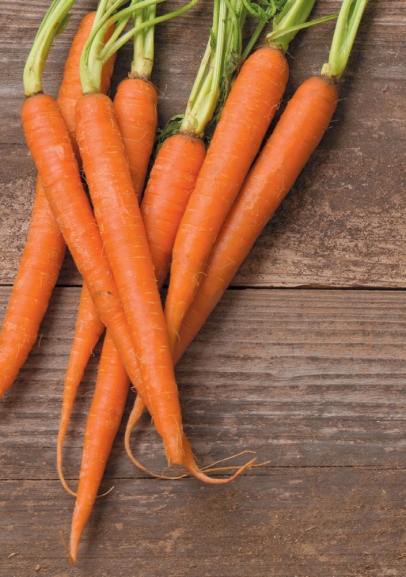Think Small: Salad Bowl Gardening
Since the 1950s, Americans have been using their leisure time to garden, and today it remains one of our most popular and rewarding hobbies. While most of the northern half of the country can only perform this pleasurable pastime about six months out of the year, New Orleanians can garden nearly year round.
Our other year-round hobby here, of course, is eating. You’d think more people would combine the two, but that’s not the case. Many people would like to grow edibles but consider space limitations a deterrent.
But you don’t have to have a fully functioning farm, or even a backyard, to grow your own food.
Imagine deciding you want to have a salad right now. Wouldn’t it be nice to walk out your back door or onto your balcony to a single pot, harvest a few leaves of lettuce, a cucumber, and some cherry tomatoes, bring them back inside and have lunch? This style of gardening has been described as salad bowl gardening.
When planning your petite garden, limit yourself to the combinations of vegetables your taste buds enjoy. The eponymous option, as mentioned earlier, is to grow your very own salad by planting lettuce, tomato and cucumber. But don’t stop there. If you want to be adventurous, grow a few hot peppers to be added to the dish.
I love the idea of growing a salsa bowl by adding onion, cilantro, hot peppers, and tomato to a container. Picture having one of these beautifully decorative salsa bowls on your patio to harvest from when guests visit.
Now that you are ready to start this easy spring or fall endeavor, take a stroll to your local nursery. Depending on the time of year, it should carry all the plants needed for your venture. Since some of these projects require cool- and warm-season plants, you’ll have the most success if you plant on the cusps of the seasons, such as early spring or late fall. The most important aspect of this project is to make sure there will be enough room in the pot to adequately grow all the plant material required. I recommend starting with a minimum of three plants, which will require at least a 16-inch pot. The more space you can give the plants to stretch out and grow, the more successful you will be in the long run. The more plants you add to your container, the larger the pot needs to be.
After deciding on the appropriate pot size, select a bag of potting mix. There are an overwhelming number of types and brands to choose from, so here are a few criteria that I use to pick out my potting mix. First, make sure that it is a potting mix. This may sound outlandish but I have seen people use anything from sand to pine bark mulch to fill their containers. Second, choose something that has a high amount of peat moss. This is the water-holding material used in potting mixes. Additionally, make sure it has plenty of perlite, the white particles that look like tiny bits of Styrofoam. This will help the mix to easily shed excess water.
The last criterion for choosing a potting mix is to make sure you have enough when you leave the store. You don’t want to empty the whole bag of potting mix into the container only to realize you don’t have enough mix. If you choose a potting mix that does not contain fertilizer, be sure to purchase a bag of general-purpose fertilizer before you leave the nursery. There are several organic options for those.
When you get home, choose an area for your salad bowl that will receive at least six to eight hours of sunlight per day. The location you choose will not only be light dependent but will also need to have easy access to water or you will need to have a watering pail handy. Plants that are grown in a closed system, such as containers, do not have the same ability to send roots out in search of water. This means you will have to water your potted plants more frequently than those in the ground.
Lastly, when planting, evenly space the plants in your container that has been filled with the potting mix. Leave a one-inch space between the soil line and the top of the pot. If the pot is filled too high, the container may lose potting mix when it is being watered. Add the fertilizer by following the directions on the bag. Check the soil every few days to determine if more water is needed.
With festival season upon us, we will be visiting with friends and having guests over to our homes. This makes for a great opportunity to display your new creations. Try your hand at growing a salad bowl. Even if just for a conversation starter, you will certainly enjoy trying this new experience. The ability to grow your own food is a very rewarding skill, even if your entire farm is inside a 16-inch pot.





